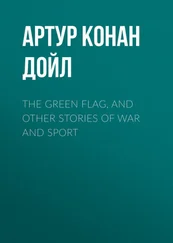So while the nuts and bolts of PsyOps haven’t changed all that much over the years, the delivery system for putting (mental) lead on the (psychological) target has indeed gone through an extraordinarily significant transition. After all, who needs to airdrop leaflets when you can reach tens (or hundreds) of millions of people through social media?
You’ve heard this all before. I’m not paving any new roads to enlightenment here. We are surrounded by social media and all its ramifications. It’s hard to ignore the impact of Twitter, Facebook, et al. Especially considering what might one day go down in history as the most effective use of PsyOps in human history: the 2016 presidential election.
And before you start to mentally compose that letter of complaint to me, or this book’s publisher, or to whomever, take a deep breath. I am not making any kind of political statement here. This is objective fact, not partisan politics. Russian intelligence convinced a huge chunk of the American population that a local DC pizza joint had a child sex-slave ring in its basement. Some guy actually walked in there with a high-powered rifle with the intent of shooting up the place and saving the kids. This wasn’t a mentally deranged person—he was lucid enough to realize his mistake when the workers there showed him that the restaurant did not even have a basement. He was just a guy who fell victim to an extremely well-funded and efficient program of Russian psychological operations. And he wasn’t alone. We are way too close to these events to know the complete extent of the damage, but it’s clear from what we do know that hundreds of thousands (if not millions) of Americans of all political stripes were duped by Russian propaganda and made-up news stories, all intended to divide us, all propagated and fueled by social media.
As an American, I say: Damn you, Russians. We will return the favor one day.
But as an intelligence historian, I have to say: What. A. Thing. Of. Beauty.
You might have heard of some of the code names given to secret military operations to disguise their real purposes. It wouldn’t make much sense to name a military mission Operation We Are About to Invade Mexico, or Project Secret Stealth Aircraft.
No. Usually they are something obscure. Something random.
And sometimes they are very cool. Operation Wrath of God was the Israeli response to the massacre of Israeli Olympians at Munich in 1972. Operation Dynamo was the frantic plan to rescue hundreds of thousands of British troops from the beaches of Dunkirk in World War II. Operation Rolling Thunder was the American bombing campaign over Vietnam in 1967–68. Operation Urgent Fury was the U.S. mission to invade Grenada in 1983 (this name probably should have been saved for something else…).
Then you have Operation Iraqi Freedom, which puts my entire argument in the shredder. It’s neither cool-sounding nor obscuring. But let’s chalk that one up as an anomaly.
One of the most effective uses of a coding structure to hide the true nature of secret military projects was the British “Rainbow codes” system. In use from the end of World War II until the late 1950s, Rainbow codes allowed the British to clearly identify secret projects without revealing too much information about what they actually were. Here’s how it worked: Each Rainbow code name was created by taking (1) a random selection from a list of colors (black, blue, brown, green, indigo, jade, orange, pink, purple, red, violet, and yellow) and then (2) a word (a noun) taken from a list of pre-chosen possibilities (arrow, knight, prince, badger, orchid, and so on). For example, Black Maria was the code name for a fighter aircraft Identification Friend or Foe (IFF) interrogator—this tells you who are the good guys and bad guys in a dogfight, particularly useful when you don’t have visual contact with the other aircraft. Blue Duck was an antisubmarine missile, while Blue Lagoon was an infrared air-to-air detector. Blue Steel was an air-launched nuclear missile, and Green Cheese was a nuclear antiship missile. Other names of interest (at least for comic relief) are Indigo Hammer, Purple Passion, Purple Possum, Violet Mist, Yellow Duckling, Green Wizard, and, by far the Britishest of the British names, Orange Pippin (a fire control radar for antiaircraft, in case you really wanted to know).
Then there was Blue Peacock. One of the strangest ideas in a book of extremely strange ideas.
• • •
But before we talkabout Blue Peacock, we need to take a brief detour to discuss the West’s Cold War–era grand strategy for fighting World War III. It was fairly straightforward: Nuke the living hell out of the Soviet Union and her allies, then pray some of us survive the whole thing and can rebuild civilization out of the ashes and nuclear fallout.
Okay, so maybe it wasn’t quite that simple. The master plan for the North Atlantic Treaty Organization (NATO) at the onset of the Cold War wasn’t just a single word: nukes! But it really might as well have been. NATO had no intention of slugging out a conventional war with the Soviets in central Europe. That was a losing proposition. The Red Army, which had just about single-handedly defeated the Nazi war machine in World War II, was powerful—and ginormous.
Or at least we thought so at the time. Intelligence on the size and capabilities of the Soviet armed forces in the 1940s and ’50s was spotty (at best) or nonexistent (more likely). We had very little real information to work with. So the worst-case scenario was accepted as inalienable fact.
It turns out we dramatically overestimated the strength of our communist adversaries. Many of their divisions existed only on paper, and our assessment of their strength did not take into account all of the problems they faced in some of the peripheral but essential aspects of warfare, such as maintenance, logistics, transportation, quality control (of soldiers and equipment), and command and control. The Soviets were far weaker than anyone thought.
But that doesn’t matter. No, really. It doesn’t. All that matters is that the Allied war planners of the 1950s thought the Soviets were unbeatable in a conventional war. They thought Western forces—as good as they were, as well trained, well equipped, and well supplied as they might be—didn’t stand a chance against the mighty Red Army. If we put aside our (unfair) advantage of knowing things they didn’t, it’s easy to see why NATO plans called for a significant use of nuclear weapons in any large-scale war with the Soviet Union, despite the obvious risks attached.
Consider this: The West assumed that the Soviet army had 175 active divisions by the mid-1950s. This comes out to 5.5 million men under arms, 35,000 tanks, and up to 19,000 aircraft. And that’s just the Soviets. Non-Soviet Warsaw Pact forces (Poland, Czechoslovakia, East Germany, Albania, and so on) added another 60 divisions amounting to 800,000 troops and almost 3,000 more aircraft.
Compare that with NATO forces in Europe at that time. In 1949, the year of NATO’s creation, Western nations could draw upon only a handful of deployed divisions—three and a half U.S., two and a half British, and fewer than six French. Belgium and the Netherlands contributed about six between them. And even these numbers are misleading. Most of the troops were mainly focused on occupation duties inside West Germany, and they were not properly outfitted or trained for combat operations against a concentrated Soviet invasion.
After the Korean War broke out, things got a little better for NATO, as military planners and politicians began to finally reconsider the rapid demobilization they undertook after the end of World War II. During the early 1950s, NATO forces in central Europe grew to twenty divisions, and by 1955 NATO had available twenty-five active divisions and twenty-five reserve divisions in Europe.
Читать дальше











